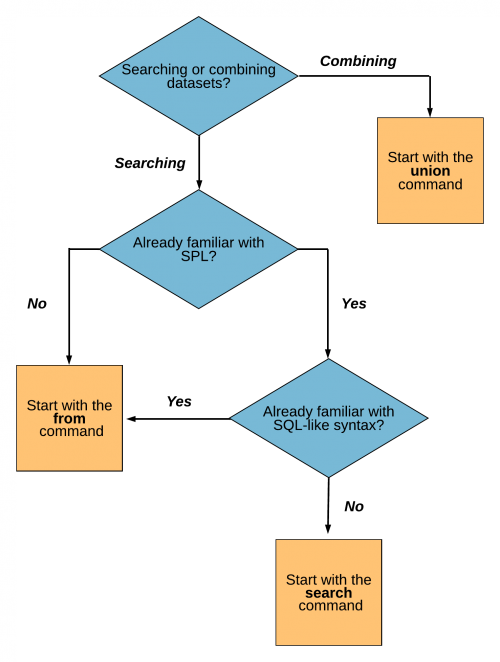Start searching using SPL2
You're probably asking yourself, "So how do I start searching my data?"
You start with a decision. You need to ask yourself if you prefer to search using SQL-like commands or if you prefer to search using internet-like keywords.
You start a search with the pipe ( | ) character followed by a generating command.
The Search Processing Language (SPL) is based on commands separated by the pipe character ( | ). SPL is easy to write and read because you append one command after the other, rather than adding deeper and deeper nesting used by some search languages.
Start with a generating command
Your search must start with a generating command, which are commands you use to generate search results from your data. The generating commands are from, search, and union.
The following table describes when to use each generating command:
| from command | search command | union command |
|---|---|---|
|
|
|
|
|
After you identify the generating command that you want to use, you must determine which dataset you want to search.
Next step
See What's a dataset.
| Introduction | What's a dataset? |
This documentation applies to the following versions of Splunk® Cloud Services: current

 Download manual
Download manual
Feedback submitted, thanks!